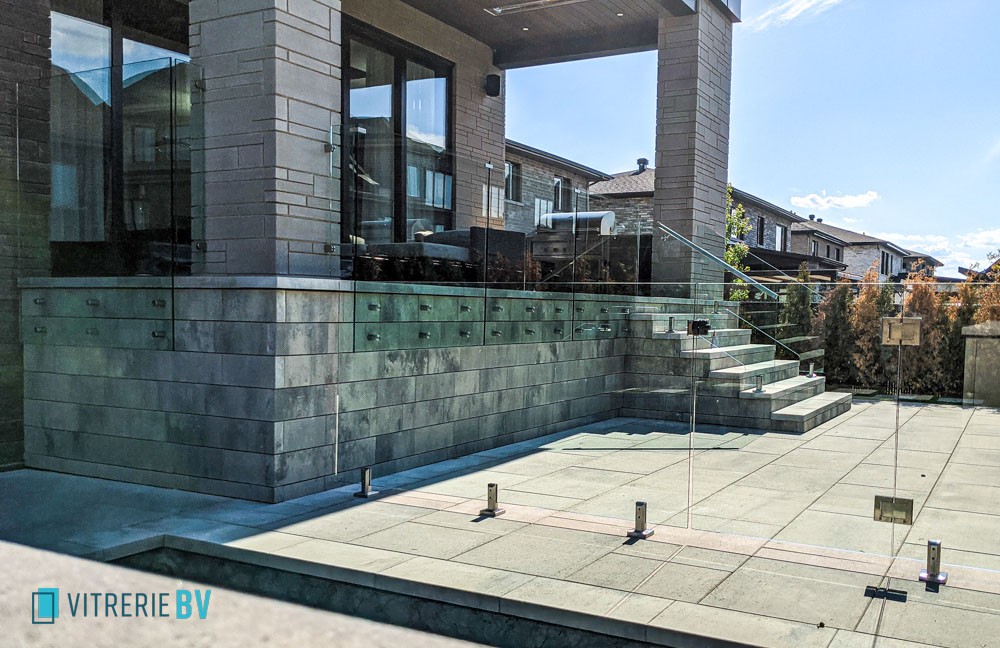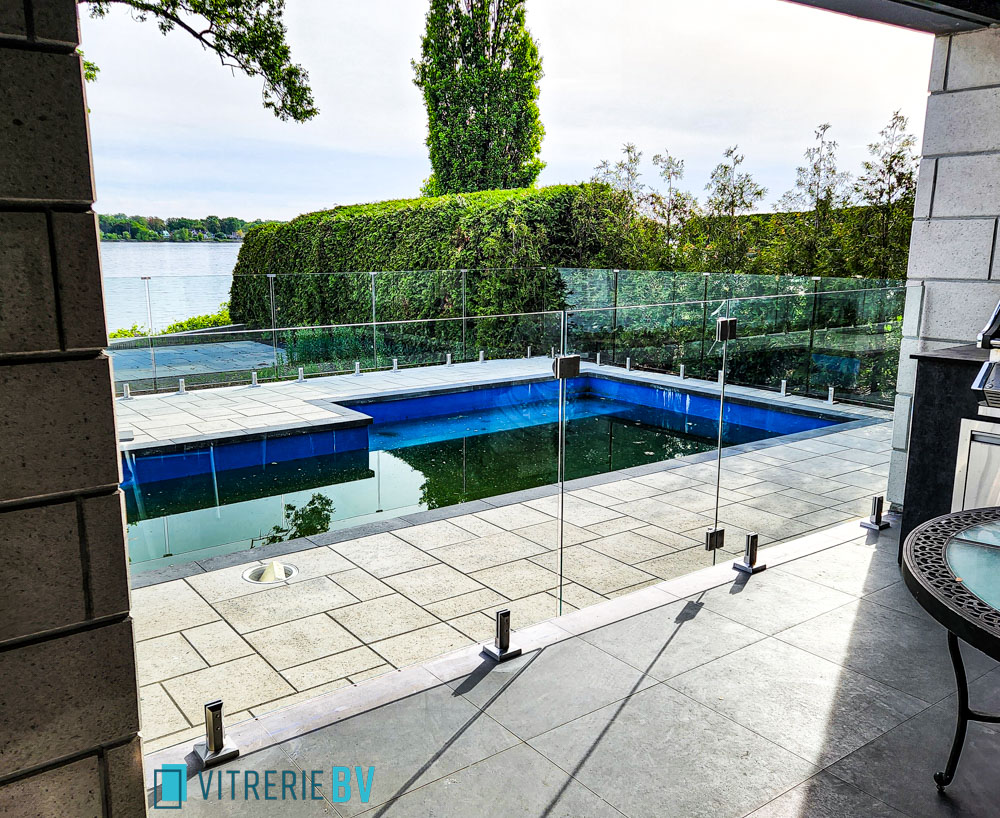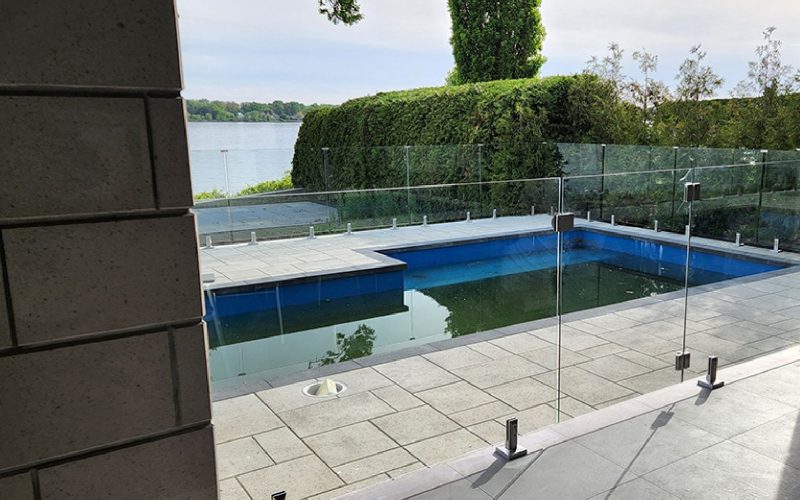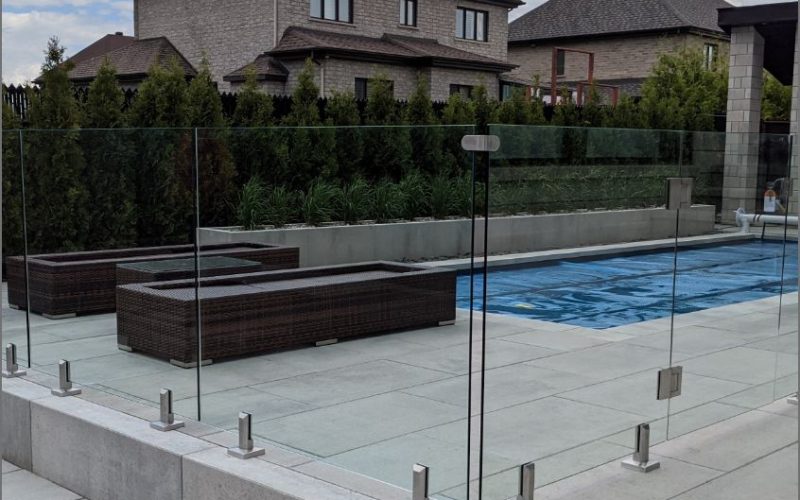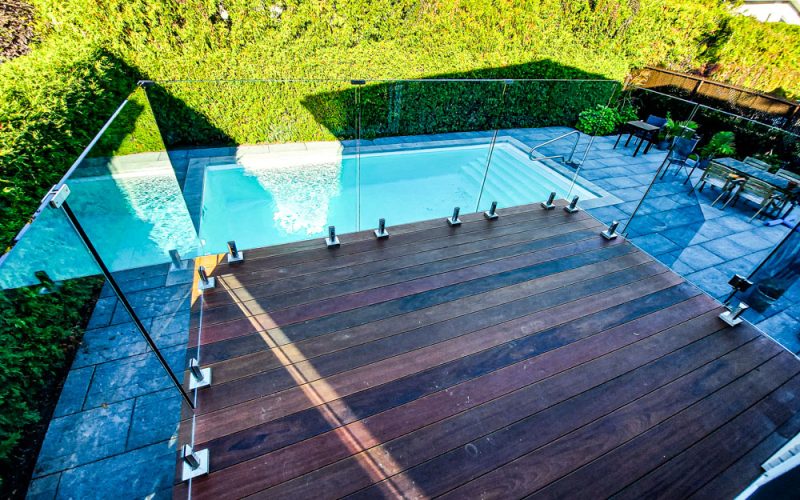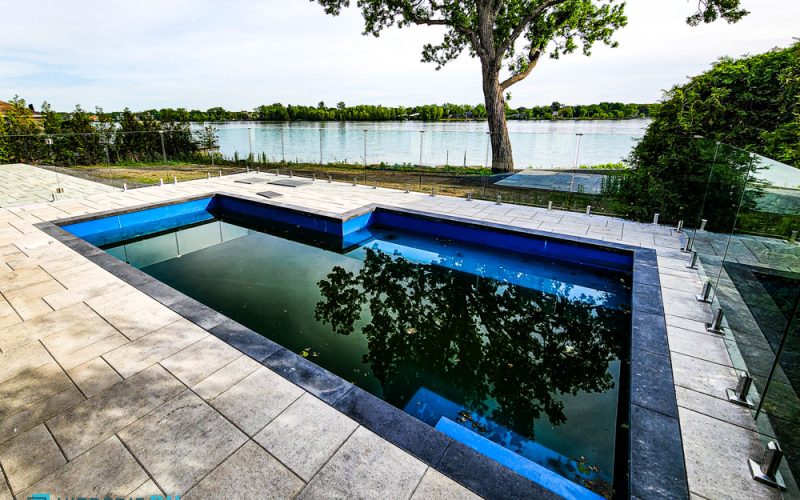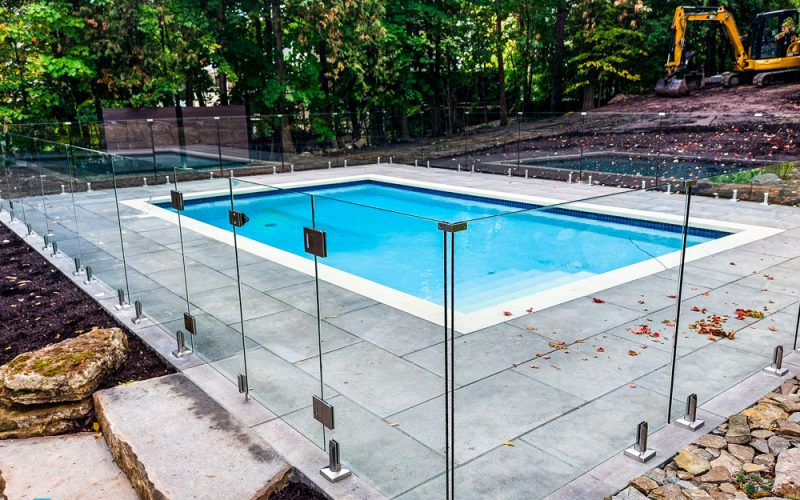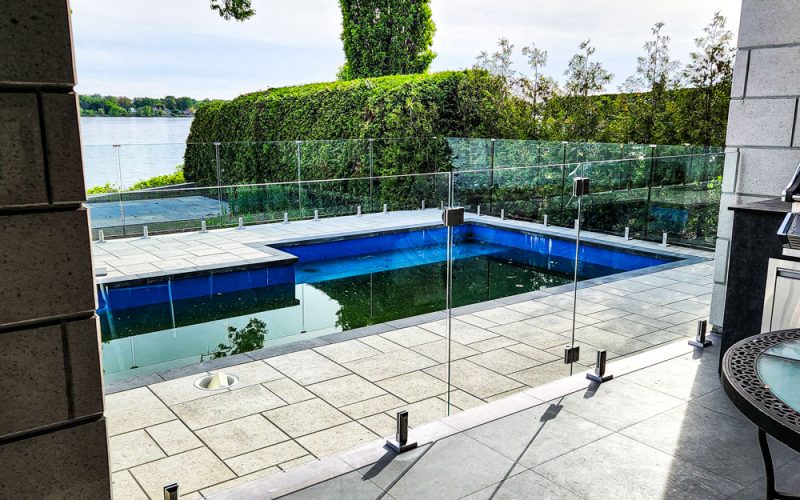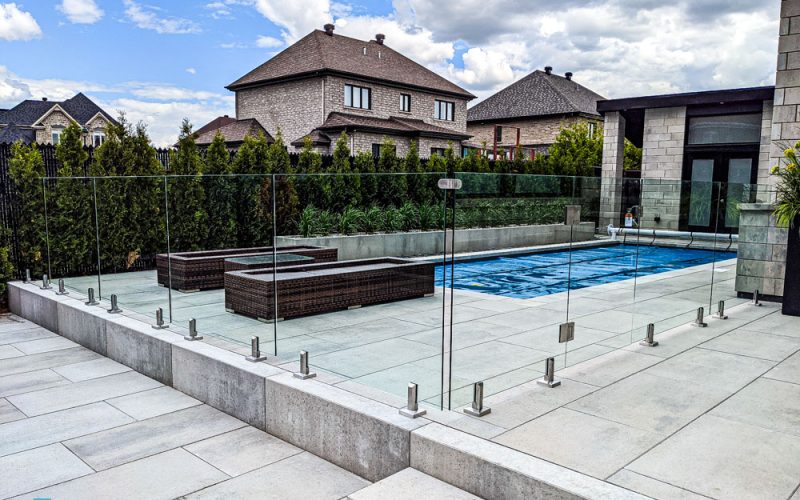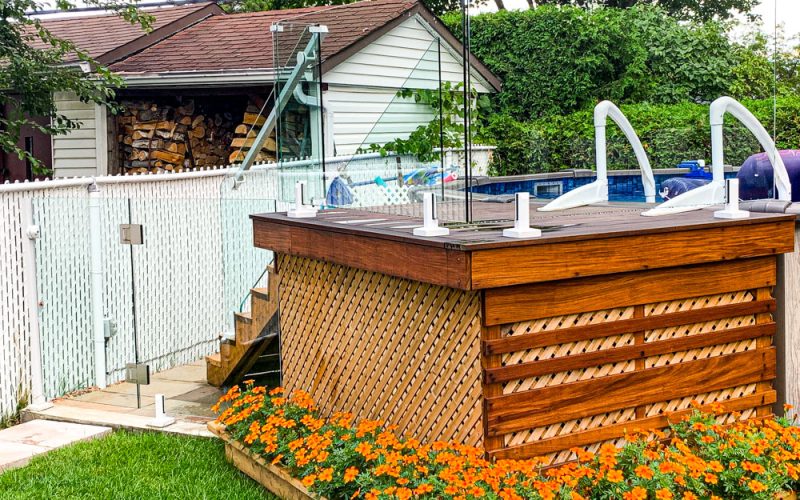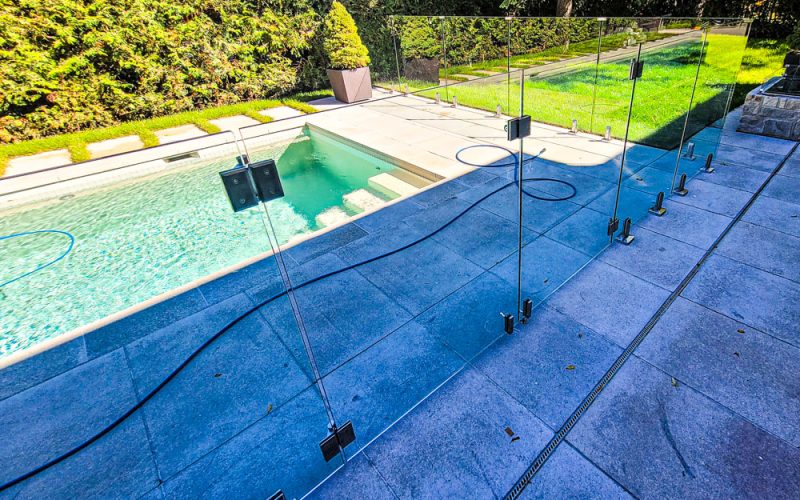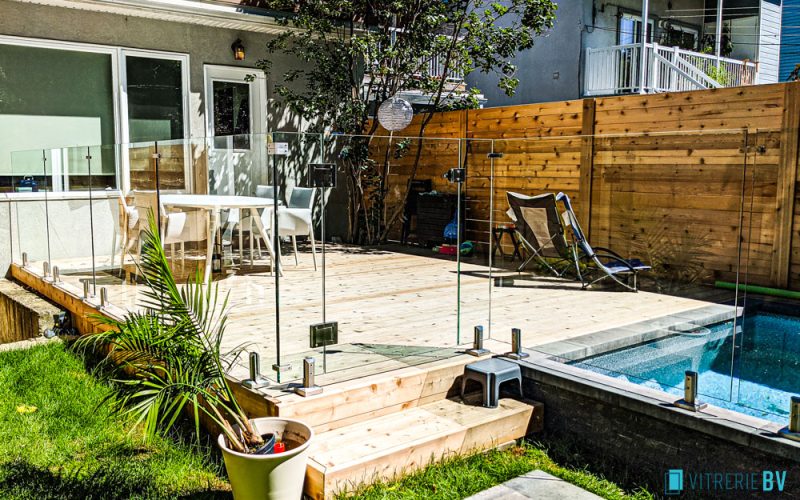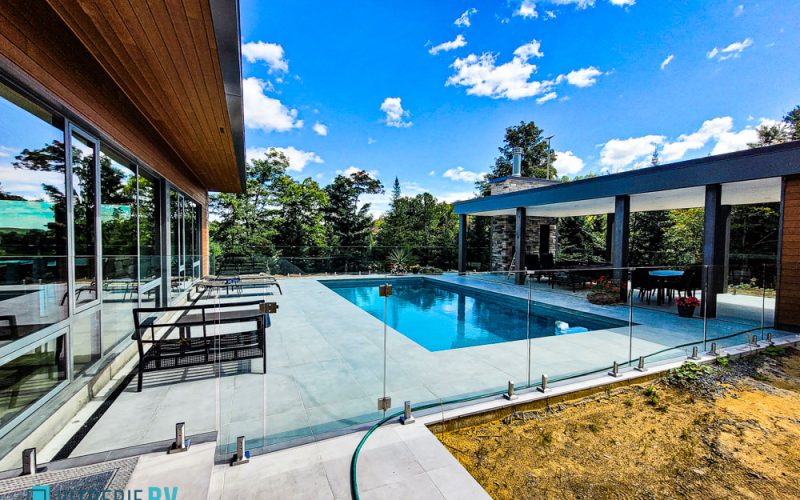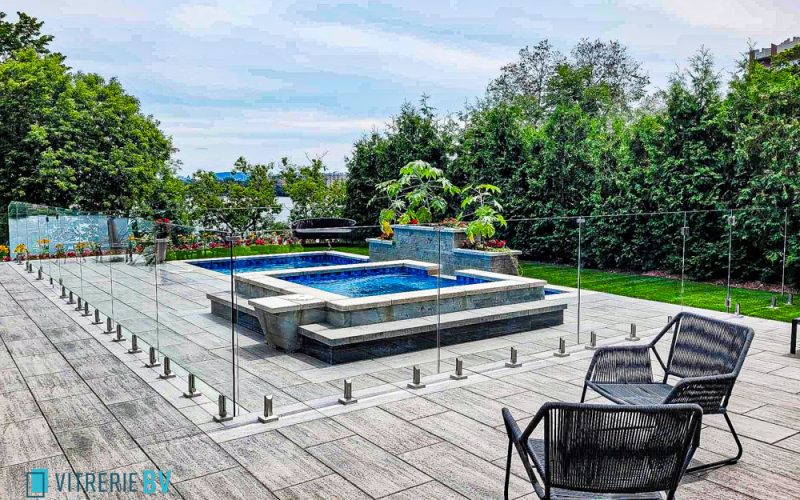We can picture you putting both hands on your head thinking:
So… now what? The fence!
What are the regulations?
I don’t have enough space on my property to put up a fence.
Will I have to redo the pool to comply with regulations?
There you are, at the crossroads, with an expression of “Where’s the ‘Easy’ button?”
It can take hours of reading and research to fully understand the new in-ground and above-ground pool enclosure regulations. We want to make your life easier, so here’s a summary of the new pool regulations from the most up-to-date, credible sources and certainly also from our expertise in the field and in managing many projects with different cities.
Why This Regulation?
As you probably know, safety is at the heart of these new rules.
Ah, it’s the same old story, year after year, in the wonderful world of swimming pools. There’s always that little aspiring adventurer, the “Tour de la Piscine” champion, who escapes parental supervision to retrieve his dropped ball or to extend his November swimming session after a little frost.
It’s as if every year, the pool becomes a war zone, with parents playing the role of peacekeepers, trying to maintain security while the young explorers, a mix between Indiana Jones and G.I. Jane, make their heroic escape.
But the song doesn’t sound like Taylor Swift feeling liberated after a break-up, but like Whitney Houston singing ”I will Always Love You”.
Does this figure of speech convince you of the regulations? We are!
With the increase in the number of residential swimming pools, especially since the famous COVID-19, it’s vital to ensure that these spaces are safe for everyone, especially children. For our beloved Indiana Jones or G.I. Jane. If you’re more the analytical type, we invite you to check out the Lifesaving Society‘s website for some statistics.
Do You Need a Fence? Yes or No?
In general, the answer is yes. Sorry about that! Almost all municipalities require a pool fence, regardless of the size or depth of the pool. In fact, any pool 60 cm deep or more must be fenced. Even above-ground and inflatable pools can fall under this regulation.
However, always check the specifics of your city, as certain exceptions may apply. Ah, the wonderful world of exceptions! Some cities are more permissive, while others are stricter.
But rest assured, nothing too dramatic. There’s no need to prepare the “For Sale” sign in front of your house. Just make sure your pool fence complies, and you’ll remain the king or queen of your very own water castle!
THE Important Date
It’s like “The Tortoise and The Hare” from La Fontaine’s fable. The new regulations will come into force on September 30, 2025. Initially, it was scheduled for July 2023, but due to general labour shortages in the market, the regulations have been pushed back.
You still have time to prepare, but it’s wise to start planning right away. Take your time and avoid the pitfalls of lacking materials, manpower, permits or any other imponderable. And don’t forget the constant rise in prices. You can even book an appointment now.
What About Pools Installed Before 2010
The coroners have spoken: it’s the end of acquired rights. So get your tissues out!
Therefore, if your pool was installed before 2010, you had in the past a vested right and were not obliged to revise your installations.
From now on, you have until September 30, 2025, to comply and bring your facilities into line with the new swimming pool regulations.
Swimming Pool Regulations in a Nutshell
Here’s a summary of pool regulations:
Respect the one-meter rule: A one-meter clearance strip must be maintained between the pool and its fence. No equipment or structures should be within this one-meter perimeter, to limit the risk of climbing.
Minimum fence height: The standard minimum height is 1.20 metres (or 48”) and must be difficult to climb.
Fences with bars: Prevent objects up to 10 cm in diameter from passing between bars, slats, junctions and partitions.
Access door: It must close and lock automatically.
Authorized materials: The most common materials are glass, aluminum and wood.
Check municipal rules: The rules vary from city to city. You can find out more from your own city.
If you want to know more, here’s a good summary of the main laws and the complete Document [Residential pool safety measures; in French only]
What Type of Pool Fence Should I Install?
There are 3 main types of pool fencing materials on the market. These are all good options, but it all depends on the ambience you want to create in your backyard, the depth of your wallet and how much time you’re prepared to devote to their maintenance.
Here are the pros and cons of each solution.
Aluminum fence
Advantages: Aluminum pool enclosures are lightweight, corrosion-resistant and available in a multitude of finishes, colours and styles. The possibilities are endless for total personalization of your outdoor space – put your personal touch on it!
Disadvantages: However, aluminum is a fairly soft metal that can warp over time. What’s more, a quality, durable fence can weigh heavily on your wallet. It’s also essential to make sure you choose quality hinges to limit any risk of rust.
Wooden fence
Advantages: Wooden fencing brings undeniable natural charm and is available in many shades and styles, while remaining a reasonable budget option.
Disadvantages: However, it requires regular care to maintain its beauty, making it a less suitable choice for busy families looking for a turnkey, maintenance-free home.
Glass fence
Advantages: With a touch of modernity and elegance, this option offers an unobstructed view of the pool. Tempered glass panels are strong, durable and require very little maintenance. They retain their beauty over time.
Disadvantages: However, although this solution is turnkey and guarantees long-term durability, the initial investment is greater than that of the other two materials.
When choosing materials, we encourage our customers to consider the future. After a few years, all these options are equally valid.
Steps for Installing a Glass Pool Fence
Design and proposal
Design creation and service proposal.
Measurement
Make an appointment for an initial measurement.
Choice of Materials
Choose the type of glass and hardware best suited to your needs.
Project Confirmation
Creation of a 2D/3D plan so you can visualize the result and validate costs.
Fabrication and installation
Glass panel fabrication. Made right here in Quebec.
Use
And that’s it, your pool fence is installed!
Now you can enjoy your pool in complete peace and security.
FAQ
So, you’ve read this far and you’re still missing some information? We’ve found an interesting resource that brings together the most frequently asked questions, such as:
- With the changes to the regulations, do the requirements still apply to my installations?
- I bought a house in 2005 and added safety upgrades. Do I still need to modify my installations?
- Who do I contact to check whether my installations are compliant?
See all the questions and answers in this document [Residential pool safety measures; in French only]
Examples of Glass Pool Fence Installation
We don’t want to leave you on a dry note! So here are some of the achievements of delighted homeowners who have already successfully taken this step!
Sources:
https://educaloi.qc.ca/en/legal-news/does-your-swimming-pool-meet-safety-standards/
https://montreal.ca/en/how-to/install-above-ground-pool
https://www.legisquebec.gouv.qc.ca/en/document/cr/s-3.1.02,%20r.%201
https://www.mamh.gouv.qc.ca/ministere/securite-des-piscines-residentielles/mesures-de-securite/ (French only)
https://www.quebec.ca/nouvelles/actualites/details/piscines-residentielles-le-gouvernement-du-quebec-rappelle-les-mesures-de-securite (French only)
https://ici.radio-canada.ca/nouvelle/1880838/reglement-securite-piscines-clotures-report-2025 (French only)
https://montreal.ca/articles/reglementation-pour-linstallation-ou-la-mise-aux-normes-dune-piscine-49594 (French only)
https://www.mamh.gouv.qc.ca/fileadmin/publications/ministere/securite_piscines_residentielles/FAQ_PiscineResidentielle.pdf (French only)
